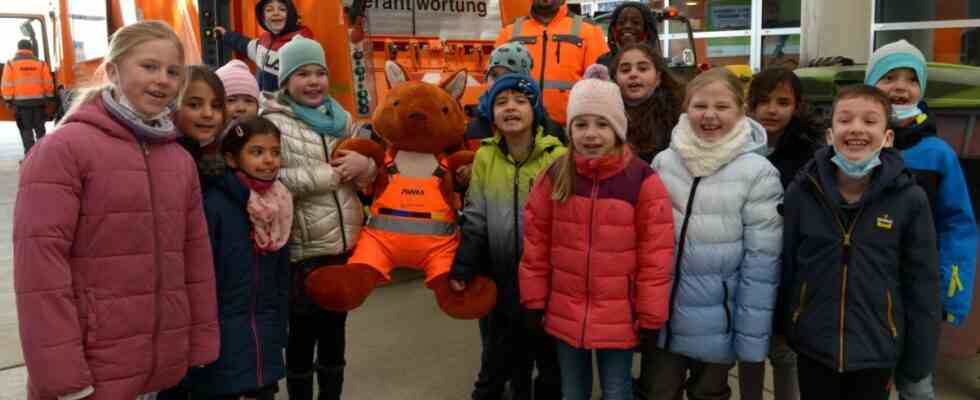“Not throwing away rubbish is world pollution,” said a student in class 2b at Pfanzeltplatz elementary school when the 22 children found out about the new children’s brand “AWM Kids” in the foyer of the Munich waste management company (AWM). The AWM has been committed to environmental education for children of primary school age for several years.
Second Plant Manager Sabine Schulz-Hammerl says that children of that age are most interested in the subject. They would also have a role model function in the families when they tell how waste can be better separated and avoided. The basics for the correct handling of waste should be laid early on, so that the behavior is anchored in the children.
Elisa and Lisa, students in 2b, say that they have already learned a lot about garbage in home and science classes. For the two, waste is valuable if it can be reused. Lisa says she’s made toys out of old yoghurt pots. Another child tells her cousin that she gives clothes that no longer fit.
The children are very interested in nature and the environment, says their teacher Angelica Caro-Ortiz: “The garbage in the sea and the simple throwing away of things make the children sad.” Therefore, it conveys a more conscious handling of waste. From the first grade on, attention is paid to avoiding waste and sensitizing the children. Without thinking twice, the students report that they use metal drinking bottles, take home-baked bars in the lunch box and bring deposit bottles back to the beverage store with their parents.
If you were to stack Munich’s annual residual waste, it would be taller than the Olympic Tower
Munich produces a lot of non-recyclable residual waste every year – if you stacked it, it would be higher than the Olympic Tower. 42,000 tons of this is plastic packaging and composites alone, which corresponds to an amount of 1.2 cubic meters per capita and year. The AWM empties around 60,000 garbage cans every day. The production and disposal of the mostly short-lived packaging requires large amounts of resources, not only raw materials, but also water and energy. Part of the waste ends up in nature and as microplastics back to humans via the food chain.
The children from 2b already know that most rubbish is harmful to the environment. The AWM would like to reach not just them, but everyone, says Schulz-Hammerl. The new children’s brand would provide teachers with teaching and learning materials. In addition to the theory, visits to the recycling centers are offered – and the garbage truck drives directly to the schools. There, the students can, for example, examine rubbish under the microscope.
Because of the corona pandemic, the interactive offers have been severely restricted in the past two years. Schulz-Hammerl is all the more pleased about the enthusiasm that the elementary school students still bring with them. Elisa and Pina already knew almost everything they heard at the AWM from class – but now they want to put several trash cans in their rooms to separate them even better.

